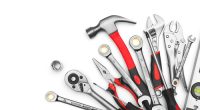How Important are Industrial Motors
Industrial motors or electric motors as most people know them, have become entwined into our everyday lives. So many of our appliances use industrial motors to convert energy from electrical energy into mechanical energy like our computers, air conditioners, refrigerators, etc. As well as being integrated into our everyday lives, industrial motors are also a major key part in many industrial processes. Many different products are produced in factories and nearly every single one of them at some point will need an industrial motor to be completed. There are over 700 million industrial motors currently being used around the world and they all have a significant impact on the world’s power supply.
The great thing about this technology is that it is constantly changing and evolving making way for new applications that are replacing older industrial motors in order to offer better efficiency, precision and performance. Newer more advanced models are able to offer better precision because of the newer, smoother microprocessor or DSP controllers that monitor and regulate all of the industrial motors output. The advances with converter topologies and industrial motors will also give you more efficiency. There are many models and makes of industrial motors; the more advanced industrial motors available today can also increase performance because they have a superior switching scheme which will provide more output power and will use more compact electronics as well as lighter motors.

Many past systems that used to control the industrial motors were quite expensive all while being inefficient and not very good performance wise, this has all changed. Over the last couple years, there has been a rise in the demand for better systems that control industrial motors that called for better performance and precision. As well as the demand and innovation for better solid-state electronics and cheaper microprocessors. This all led to the creation of the ASD or better known as an adjustable speed drive, which can control both the industrial motor and the system that controls that motor. There are five different parts you can view in an adjustable speed drive which include the mechanical load, the controller, the electric motor, the power electronic converter, and the power supply.
The power supply can provide electric energy for the system and in can be at any voltage level and either in AC or DC. The interface between the power supply and the motor is known as the electronic converter and having this interface allows almost any type of power supply to be used with nearly every type of electric motor. The motor output is controlled by the controller which is made possible by adjusting the current, voltage or frequency that is sent to the motor which is controlled and manipulated by the power electronic converter. These controllers can vary from model to model, they can be a super simple design or they can come as complex as a microprocessor.
An industrial motor can be a DC motor or AC induction motor, this can also vary on the make and model. Anything that requires energy to move in a cycling motion will need energy, this is known as the mechanical load which could mean anything from blades from a fan to the rollers in a conveyor belt.



